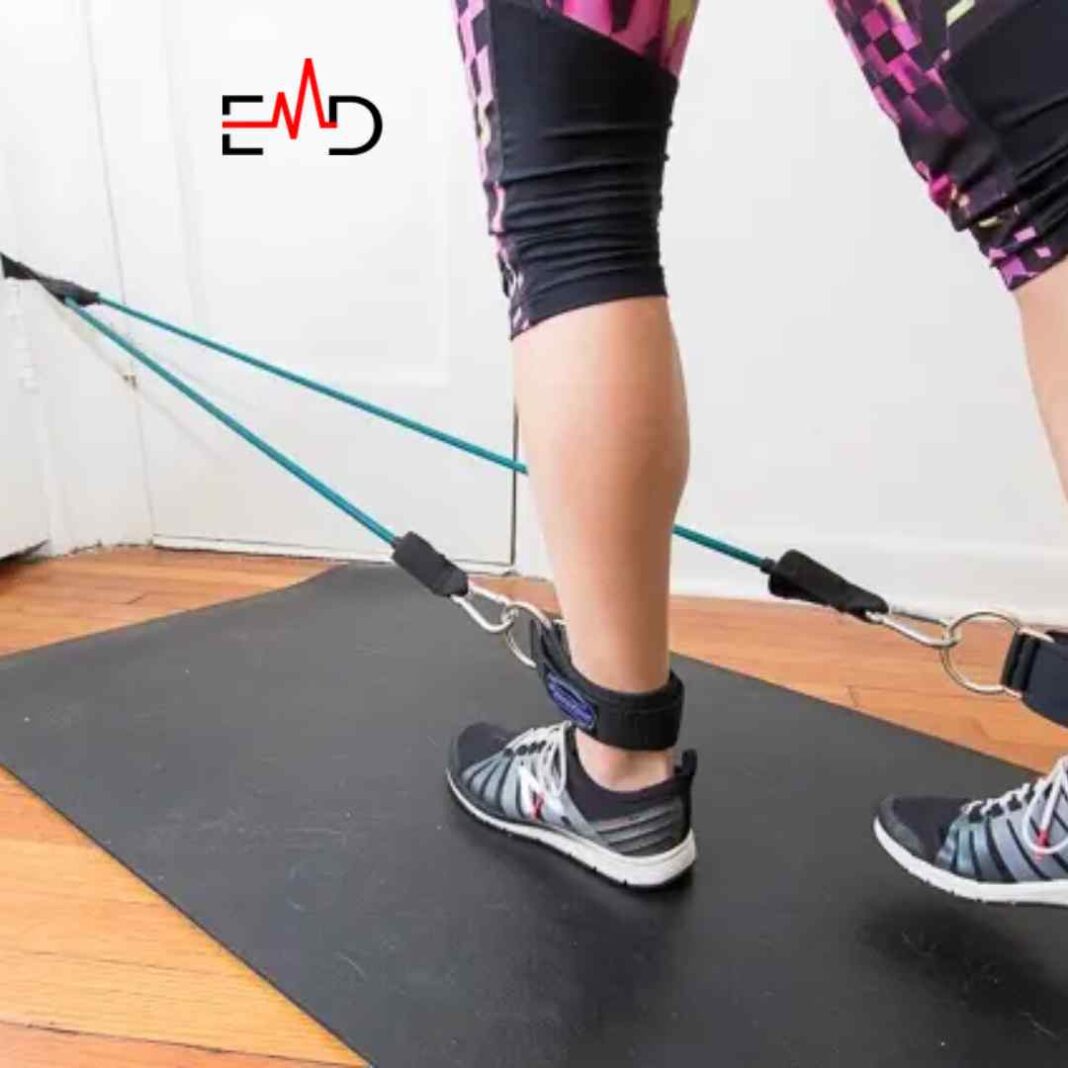Exercise Daily – Resistance bands have become a staple in the fitness world, and for good reason. With their versatility, affordability, and effectiveness, they provide an easy way to build strength, whether you’re a beginner or a seasoned athlete. This comprehensive guide dives into the many benefits of resistance bands and how you can make the most of them in your workout routine. From understanding the different types available to incorporate them into various exercises, we’ll explore why resistance bands are an essential tool for anyone serious about strength training.
Resistance bands have become a versatile and essential tool in strength training, especially for athletes aiming to enhance performance and prevent injuries. Unlike traditional weights, resistance bands offer variable resistance, meaning that the tension increases as the band stretches. This unique feature allows athletes to engage muscles differently than with free weights, improving muscle activation and stability. Resistance bands also provide targeted muscle engagement, helping athletes focus on specific muscle groups that support their primary sports movements. This precise targeting aids in balanced muscle development, which can lead to improved overall strength, speed, and agility, benefiting athletes in various sports.

Why Choose Resistance Bands Over Traditional Weights?
Resistance bands offer a unique edge compared to traditional weights like dumbbells or barbells. Unlike these bulky and often expensive pieces of equipment, resistance bands are lightweight, portable, and can be used anywhere—whether you’re at home, traveling, or at the gym. Their flexibility in use makes them an excellent addition to any fitness regimen.
Portability and Convenience
One of the standout features of resistance bands is their portability. Traditional weights can be cumbersome to transport, especially for those who travel frequently. Resistance bands, on the other hand, can easily fit into a gym bag or even a small purse, allowing you to maintain your workout routine regardless of your location. This convenience ensures that you can stay consistent with your training, which is crucial for achieving long-term fitness goals.
Variable Resistance for Enhanced Muscle Engagement
Resistance bands provide variable resistance, meaning the level of resistance changes as you stretch the band. This feature engages your muscles differently from free weights, adding an extra challenge and enhancing the effectiveness of your workouts. As the band stretches, the resistance increases, ensuring that your muscles are continuously engaged throughout the entire range of motion. This constant tension can lead to more significant strength gains and muscle growth compared to traditional weights, which offer a consistent resistance level.
Cost-Effectiveness
Another significant advantage of resistance bands is their affordability. Setting up a home gym with traditional weights can be expensive, but resistance bands offer a budget-friendly alternative without compromising on effectiveness. With various types available at different price points, you can find resistance bands that fit your budget and fitness needs.
Versatility in Workouts
Resistance bands are incredibly versatile and can be used to target every muscle group. Whether you’re aiming to build muscle, improve flexibility, or rehabilitate an injury, resistance bands can be incorporated into a wide range of exercises. From upper-body workouts like bicep curls to lower-body exercises such as squats and lunges, the possibilities are endless. This versatility makes resistance bands suitable for all fitness levels, from beginners to advanced athletes.
What is a Resistance Band?
A resistance band is an elastic band used to create resistance during exercises, helping to build and tone muscles. They come in various shapes, sizes, and resistance levels, catering to different fitness needs. From beginner to advanced levels, there’s a resistance band for everyone.
Understanding Resistance Levels
Resistance bands are typically color-coded to indicate their resistance levels, ranging from light to heavy. This system allows users to easily select the appropriate band for their strength and fitness goals. Beginners might start with lighter bands to build foundational strength, while more advanced users can opt for heavier bands to challenge their muscles further.
Material and Durability
Most resistance bands are made from natural latex or synthetic materials, ensuring durability and elasticity. High-quality bands are designed to withstand repeated stretching without losing their resistance, making them a long-lasting addition to your fitness equipment. It’s essential to choose bands made from durable materials to ensure safety and effectiveness during workouts.
Key Benefits of Using Resistance Bands
Resistance bands offer numerous benefits that go beyond what traditional weights can provide. Let’s dive into the most notable advantages that resistance bands bring to the table.
Lightweight and Portable
One of the top benefits of resistance bands is their portability. Unlike bulky weights, resistance bands are lightweight and easy to carry around, making them perfect for at-home workouts or on-the-go fitness. Their compact nature allows you to perform a wide range of exercises without the need for extensive equipment.
Travel-Friendly Fitness
For those who travel frequently, maintaining a consistent workout routine can be challenging. Resistance bands eliminate this obstacle by providing a versatile and portable solution. Whether you’re staying in a hotel room or visiting a friend, you can easily incorporate resistance bands into your workout without the need for a gym.
Cost-Effective for Any Budget
Resistance bands are budget-friendly, allowing anyone to build a home gym without breaking the bank. With various types available at different price points, there’s an option for every budget. Compared to traditional weights, which can be expensive and require significant space, resistance bands offer a cost-effective alternative without compromising on effectiveness.
Building a Home Gym on a Budget
Creating a home gym with resistance bands is both affordable and space-efficient. A basic set of resistance bands can provide a wide range of exercises, eliminating the need for multiple pieces of equipment. This makes resistance bands an excellent choice for those looking to start their fitness journey without a substantial financial investment.
Safe for All Fitness Levels
Whether you’re new to exercise or a fitness pro, resistance bands provide safe options for every skill level. You can adjust the intensity by choosing a band with a suitable resistance level, helping reduce the risk of injury. Unlike heavy weights, which can strain muscles and joints if not used correctly, resistance bands offer a controlled and gradual increase in resistance.
Injury Prevention and Rehabilitation
Resistance bands are particularly beneficial for individuals recovering from injuries. They allow for gentle strengthening of muscles without putting excessive strain on joints, promoting safe and effective rehabilitation. Additionally, their versatility ensures that users can perform exercises that accommodate their specific needs and limitations.
Versatile for Different Exercises
Resistance bands can be used to target every muscle group. From bicep curls to squats, they add a unique resistance element that challenges muscles in various ways, boosting strength and endurance. This versatility makes resistance bands suitable for a wide range of workout routines, including strength training, flexibility exercises, and even cardio workouts.
Enhancing Traditional Workouts
Incorporating resistance bands into traditional weight training can enhance the effectiveness of your workouts. By adding resistance bands to exercises like bench presses or deadlifts, you can increase muscle engagement and promote greater strength gains. This combination allows for a more comprehensive and balanced workout.

How Resistance Bands Build Muscle Strength
Using resistance bands regularly can significantly enhance muscle strength. They offer a type of resistance that activates muscles in a unique way, helping to improve strength over time. Let’s explore the mechanisms behind muscle strengthening with resistance bands.
Variable Resistance for Muscle Activation
The elasticity of resistance bands provides variable resistance throughout the movement. This means your muscles are constantly engaged, leading to more effective muscle activation and growth. Unlike free weights, which offer a consistent resistance level, resistance bands increase the tension as they stretch, ensuring that your muscles work harder at different points of the exercise.
Progressive Overload
Progressive overload is a fundamental principle in strength training, where you gradually increase the resistance to continue challenging your muscles. Resistance bands make this process straightforward by allowing you to switch to bands with higher resistance levels as your strength improves. This continuous challenge promotes muscle growth and prevents plateaus in your training.
Enhanced Range of Motion
Unlike free weights, resistance bands allow for a full range of motion. This helps improve flexibility and mobility, making it easier to perform exercises safely and effectively. A full range of motion ensures that muscles are worked thoroughly, promoting balanced muscle development and reducing the risk of imbalances and injuries.
Functional Strength and Mobility
Resistance bands not only build muscle strength but also enhance functional strength and mobility. Functional strength refers to the ability to perform everyday activities with ease, while mobility pertains to the ease of movement in joints and muscles. By incorporating resistance bands into your workouts, you can develop strength that translates into real-life movements and improve overall mobility.
Time Under Tension
Time under tension refers to the duration your muscles are under strain during an exercise. Resistance bands increase time under tension by providing continuous resistance throughout the movement. This extended period of muscle engagement can lead to greater muscle fatigue and, ultimately, increased strength and hypertrophy.
Maximizing Workout Efficiency
By increasing time under tension, resistance bands make your workouts more efficient. You can achieve similar or even greater strength gains in less time compared to traditional weightlifting, making resistance bands an excellent choice for those with busy schedules who still want effective workouts.

Top Resistance Band Exercises for Strength Training
Resistance bands can be incorporated into various workouts to target different muscle groups. Here are some top exercises to get the most out of your resistance bands.
Upper Body Workouts with Resistance Bands
For upper body strength, resistance bands can be used in exercises like bicep curls, shoulder presses, and tricep extensions. These exercises are great for building muscle without putting strain on joints.
Bicep Curls
- How to Perform: Stand on the resistance band with feet shoulder-width apart. Hold the handles with palms facing forward and curl your hands towards your shoulders.
- Benefits: Targets the biceps, improving arm strength and definition.
Shoulder Presses
- How to Perform: Stand on the band, hold the handles at shoulder height with palms facing forward, and press upwards until your arms are fully extended.
- Benefits: Strengthens the deltoids, improving shoulder stability and power.
Tricep Extensions
- How to Perform: Attach the band to a high anchor point. Hold the handles and extend your arms downward, keeping your elbows close to your body.
- Benefits: Targets the triceps, enhancing arm strength and muscle tone.
Lower Body Workouts with Resistance Bands
Resistance bands can elevate lower-body workouts, including squats, lunges, and glute bridges. They add an extra layer of resistance, helping tone and strengthen leg and glute muscles.
Squats
- How to Perform: Stand on the band with feet shoulder-width apart, holding the handles at shoulder height. Perform a squat by bending your knees and lowering your hips, then return to standing.
- Benefits: Strengthens the quadriceps, hamstrings, and glutes, promoting overall lower body strength.
Lunges
- How to Perform: Stand on the band with one foot forward and one foot back. Hold the handles at your sides and perform a lunge by bending both knees, then return to the starting position.
- Benefits: Targets the legs and glutes, improving balance and stability.
Glute Bridges
- How to Perform: Lie on your back with knees bent and feet flat on the floor, placing the band around your thighs. Lift your hips towards the ceiling, squeezing your glutes at the top.
- Benefits: Isolates the glutes and hamstrings, enhancing lower body strength and muscle tone.
Full-body workouts with Resistance Bands
Full-body workouts with resistance bands are excellent for balanced strength training. Exercises like resistance band rows, chest presses, and lateral raises work multiple muscle groups, making for an efficient workout.
Resistance Band Rows
- How to Perform: Attach the band to a sturdy anchor at waist height. Hold the handles, step back to create tension, and pull the handles towards your torso, squeezing your shoulder blades together.
- Benefits: Strengthens the back, biceps, and shoulders, improving posture and upper body strength.
Chest Presses
- How to Perform: Attach the band to a high anchor point behind you. Hold the handles at chest level and press forward until your arms are fully extended.
- Benefits: Targets the chest, shoulders, and triceps, enhancing upper body strength and muscle definition.
Lateral Raises
- How to Perform: Stand on the band with feet shoulder-width apart. Hold the handles at your sides and lift your arms outward to shoulder height, then lower them back down.
- Benefits: Strengthens the shoulder muscles, improving upper body aesthetics and functionality.

Conclusion
Resistance bands are a versatile, affordable, and effective tool for strength training. They offer unique benefits over traditional weights and are ideal for all fitness levels. Whether you’re aiming to build muscle, improve flexibility, or recover from injury, resistance bands provide a safe and efficient solution for achieving your fitness goals.
Incorporating resistance bands into your workout routine can enhance your strength training regimen by providing variable resistance, promoting muscle engagement, and allowing for a wide range of exercises. Their portability and cost-effectiveness make them accessible to everyone, from beginners to advanced athletes. By avoiding common mistakes and integrating resistance bands thoughtfully into your workouts, you can maximize their benefits and achieve optimal results.
Embrace the flexibility and effectiveness of resistance bands to take your strength training to the next level. Whether you’re working out at home, in the gym, or on the go, resistance bands offer a practical and powerful way to enhance your fitness journey.
FAQs – The Benefits of Resistance Bands in Strength Training
Q: Can resistance bands replace weights entirely?
A1: While resistance bands offer excellent strength training benefits, combining them with weights can provide a well-rounded workout. Bands can complement traditional weights by adding variable resistance and targeting muscles differently, but for maximal strength gains, incorporating both is ideal.
Q: How often should I use resistance bands in my workouts?
A: You can incorporate resistance bands into your routine 3–5 times a week, depending on your fitness level and goals. It’s essential to allow adequate rest for muscle recovery, so alternating days between resistance band workouts and other forms of exercise can be beneficial.
Q: Are resistance bands effective for muscle growth?
A: Yes, resistance bands can help with muscle growth by providing constant tension and activating muscle fibers in unique ways. The variable resistance they offer ensures continuous muscle engagement, which is crucial for hypertrophy and strength gains.
Q: Can resistance bands help in weight loss?
A: Resistance band workouts can aid weight loss when combined with a healthy diet and regular cardio. They help tone muscles and increase calorie burn by incorporating strength training elements into your fitness routine, which boosts metabolism and promotes fat loss.
Q: Do resistance bands come in different resistance levels?
A: Yes, resistance bands come in various resistance levels, from light to heavy, allowing you to choose the right level for your fitness goals. This range ensures that both beginners and advanced users can find bands that suit their strengths and training needs.




